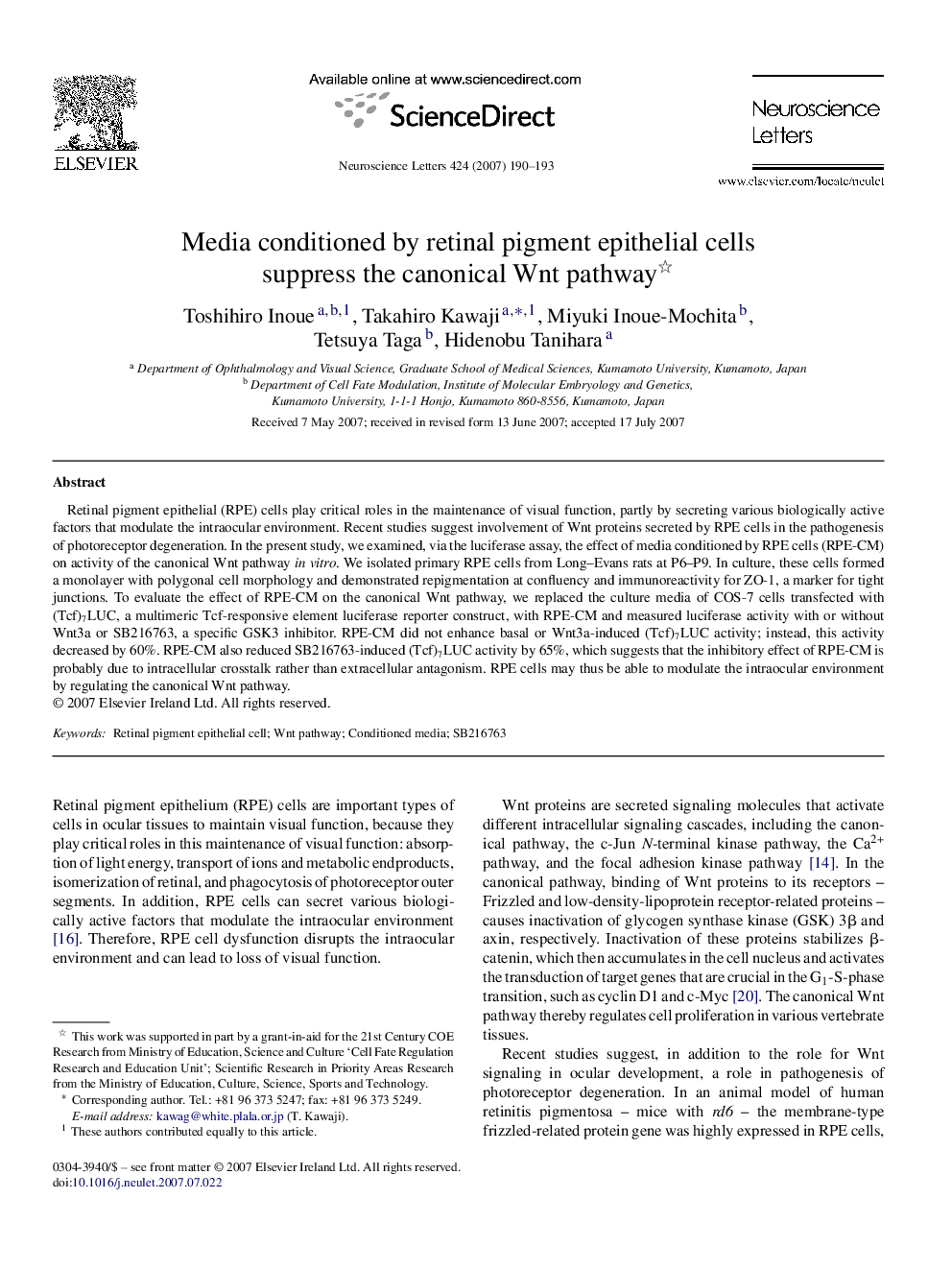| Article ID | Journal | Published Year | Pages | File Type |
|---|---|---|---|---|
| 4349094 | Neuroscience Letters | 2007 | 4 Pages |
Retinal pigment epithelial (RPE) cells play critical roles in the maintenance of visual function, partly by secreting various biologically active factors that modulate the intraocular environment. Recent studies suggest involvement of Wnt proteins secreted by RPE cells in the pathogenesis of photoreceptor degeneration. In the present study, we examined, via the luciferase assay, the effect of media conditioned by RPE cells (RPE-CM) on activity of the canonical Wnt pathway in vitro. We isolated primary RPE cells from Long–Evans rats at P6–P9. In culture, these cells formed a monolayer with polygonal cell morphology and demonstrated repigmentation at confluency and immunoreactivity for ZO-1, a marker for tight junctions. To evaluate the effect of RPE-CM on the canonical Wnt pathway, we replaced the culture media of COS-7 cells transfected with (Tcf)7LUC, a multimeric Tcf-responsive element luciferase reporter construct, with RPE-CM and measured luciferase activity with or without Wnt3a or SB216763, a specific GSK3 inhibitor. RPE-CM did not enhance basal or Wnt3a-induced (Tcf)7LUC activity; instead, this activity decreased by 60%. RPE-CM also reduced SB216763-induced (Tcf)7LUC activity by 65%, which suggests that the inhibitory effect of RPE-CM is probably due to intracellular crosstalk rather than extracellular antagonism. RPE cells may thus be able to modulate the intraocular environment by regulating the canonical Wnt pathway.
